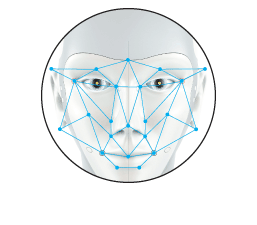Discipline Overview:
Facial Identification (FI), which is the discipline of image-based comparisons of human facial features, has been used in government and law enforcement applications for decades yet the "widespread use of facial images for scientific analysis and automated facial recognition (FR) systems both in law enforcement and the private sector is more recent.” With a greater reliance on facial recognition technology, it’s important to utilize the systems by incorporating trained and knowledgeable practitioners to evaluate the data. Practitioners who routinely evaluate images resulting from database searches are referred to as “Facial Reviewers”.
Additionally, Facial Identification practitioners may be called upon to analyze images that are not the products of database searches. These practitioners work with still video images, closed circuit camera captures, surveillance photos, etc. that are, quite often, not of the highest quality. These practitioners are referred to as “Facial Examiners”.
Regardless of the primary duties, all practitioners need some training in face physiology, morphology, expressions, feature stability and bias among other elements to demonstrate a level of proficiency and competency necessary to perform the tasks associated with facial identification.

Facial Identification Subcommittee Chair
Steven Johnson, PA, USA
Committee MembersReturn to Forensic Disciplines
Qualifications:
In addition to the aforementioned training requirements, facial reviewers and facial examiners would benefit from prior experience in comparison forensics (e.g. latent or tenprint examination, footwear, video analytics, etc.). Skilled practitioners in this discipline should be devoting at least half of their full-time duties to Facial Identification.
Certification:
Despite the growing interest in a certification program, there is currently no certification offered in facial identification through the IAI.
Standards:
Published and proposed standards applicable to the facial identification discipline can be found at the following sites:
- ASTM International
- https://compass.astm.org/ (Keyword Search – “facial”)
- Organization of Scientific Area Committees for Forensic Science (OSAC)
- Facial Identification Scientific Working Group (FISWG)
- Scientific Working Group for Digital Evidence (SWGDE)
- European Network of Forensic Science Institutes (ENSFI)
Resources:
Texts:
- Face Recognition Across the Imaging Spectrum: Bourlai, Thirimachos (Springer Press)
Informational Websites:
https://www.nist.gov/osac/subcommittees/facial-and-iris-identification
Journals that publish BPA Articles:
- Proceedings of the National Academy of Sciences (PNAS)
- Nature
- IEEE Xplore
Important Research Articles:
- Individual Differences and the Multidimensional Nature of Face Perception (D. White & A.M. Burton)
- Face Recognition by Humans and Machines: Three Fundamental Advances from Deep Learning (Alice O’Toole & Carlos Castillo)
- Diverse Types of Expertise in Facial Recognition (A. Towler et al.)
- Face recognition accuracy of forensic examiners, superrecognizers, and face recognition algorithms (P. J. Phillips et al.)
Other Organizations Relevant to this Discipline:
- "NIST Face Technology Evaluations - FRTE/FATE”
- Biometrics Institute
Ideas for More Research Projects:
- More research on the impact of training on facial analysis accuracy
- Research on the impact of bias on examination results
- Research on the individualization of ear features
- For additional Facial Identification Research and Development information, go to the OSAC link below:
